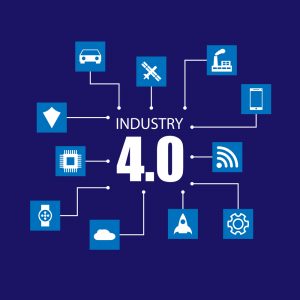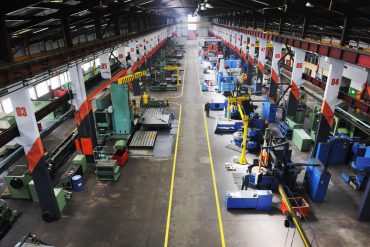
The ability to move to Industry 4.0 depends on an organization’s ability to scale its proofs of concept to a more industrialized level.
“Industry 4.0” – the initiative to bring together all the players and parts in manufacturing together into a responsive, real-time fabric – has gradually been taking shape. Now, artificial intelligence may help accelerate our advancement into this new realm.
AI’s “ability to automate, digitize, and optimize” makes it “the perfect fit for manufacturing operations, from product development to quality control,” the latest report from the CapGemini Research Institute states.
The report’s authors cite — along with many other examples — GM’s computer vision system, which enabled the company’s systems to detect 72 instances of component failure, “preventing massive downtime — a single minute of which can cost a company of that size up to $20,000.
See also: Mutually Complementary: Continuous Intelligence, IIoT, and Digital Twins
The CapGemini Research Institute report, which examines 300 manufacturers, shows that intelligent maintenance, together with product quality inspection and demand planning, represent the best initial use case for manufacturing operations. Examples of the three use cases in action include the following:
Intelligent maintenance:
- “The AI system is trained using data from past machine failures.”
- “Sensors from plant equipment continuously collect data on various operational parameters that affect machine performance.”
- “The data is collected and uploaded to data storage.”
- “The AI-based system analyzes this data and makes a variety of recommendations while improving correctness of its own predictions.”
- “Alerting service personnel when fault probability rises over a threshold.”
- “Actual data from failures is led back into the AI system to improve its accuracy in the future.”
Product quality inspection:
- “A computer-based computer vision system clicks images of incoming parts or inventory.”
- “The AI system is trained with thousands of images of parts collected by cameras in the past.”
- “The AI system compares these images with images of actual images of non-faulty parts, thus identifying defective ones.”
- “The defective parts are separated from the rest of inventory and discarded or sent for correction.”
- “The defective parts are separated from the rest of the inventory and discarded or sent for correction.”
Demand planning:
- “The AI-based system is trained using data from historical sales, local weather events, other third-party such as social media.”
- “The AI-based system then makes predictions for future consumer demand basis how event combinations in the past affected demand.”
- “Expected benefits include revenue growth, owing to better matching of demand and supply, cost savings owing to lower reliance on overstocking and reduced waste.”
The report’s authors make the following recommendations for successfully incorporating AI into manufacturing operations:
Deploy successful AI prototypes in live engineering environments. “To automate the collection of real-time, live data, the prototype needs to be integrated with legacy IT – such as MES and ERP – and industrial IoT systems.”
Put down solid foundations of data governance and AI/data talent. “Design a data governance framework that defines critical processes related to the generation, management, and analysis of data.”
Scale the AI solution across the manufacturing network. “Once the AI platform is ready, AI applications can be deployed and made available across multiple sites. Performance needs to be continuously monitored for value generated, output quality and reliability.”
While the CapGemini researchers find that major manufacturers have started experimenting with AI use cases, “scaled deployment is rare.” The ability to move to Industry 4.0 depends on an organization’s ability to scale its proofs of concept to a more industrialized level. The key, the researchers say, is to adopt “a scale-driven strategy – which focuses efforts on the most valuable use cases and lays down string governance, platform and talent foundations.”






